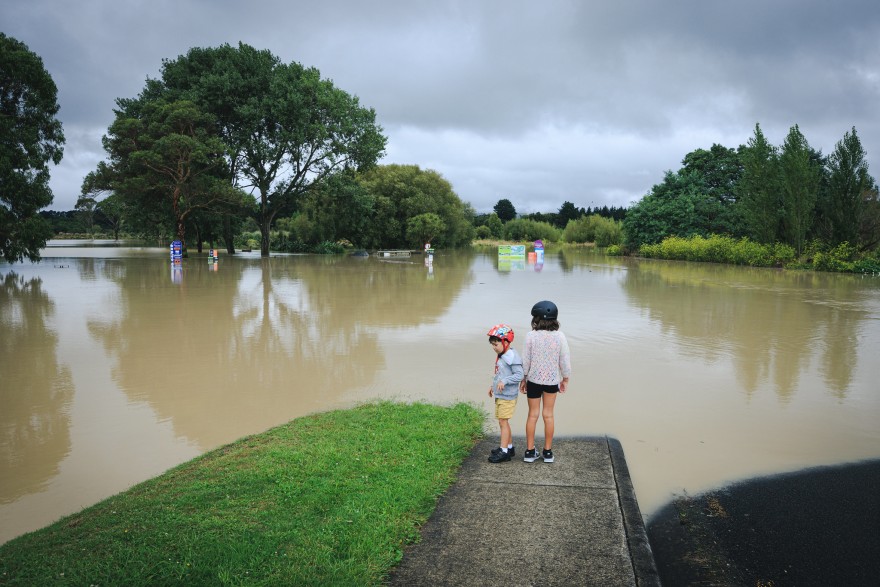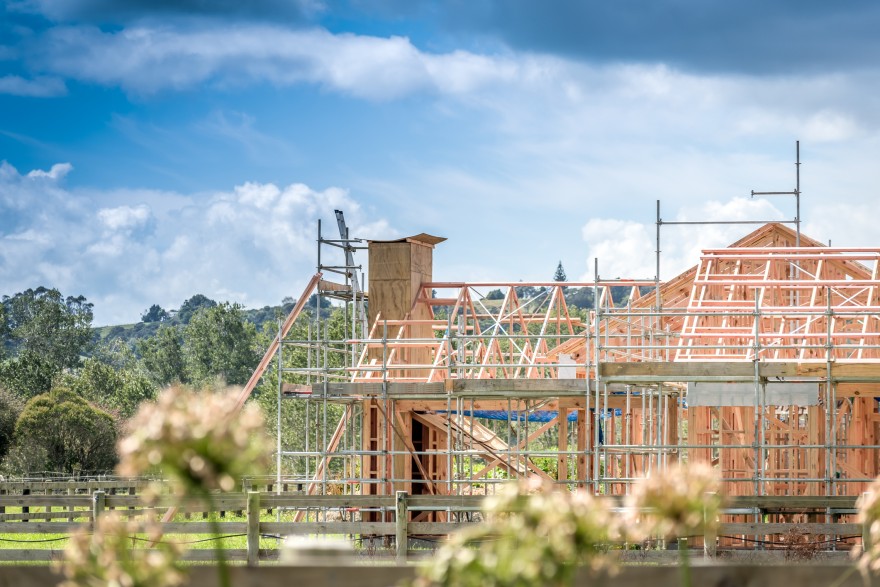Summary
Warm, dry, safe housing is undersupplied by the market in Aotearoa/New Zealand, and councils have underinvested in high-quality infrastructure. There are impressive, large-scale government investments in public housing in both urban and regional areas as well as large budget allocations for infrastructure, but there is still a shortage of habitable safe housing for low-income households.
Providing healthy, secure, affordable housing is essential to creating an inclusive, more equitable society. The rapidity of climate change bringing wilder weather requires not only an urgent upgrading of the Building Code to establish higher housing standards but continuing major investment in piping and other infrastructure networks.
The housing market can be unforgiving, particularly for those who face multiple disadvantages. Families and whanau who are homeless, in insecure housing, or living in severe housing deprivation often experience further debilitating health consequences, with impacts on their education and employment. The current system of prioritising tenants for public housing needs to be streamlined.
This briefing identifies critical policy actions to better enable all people to access warm, dry, safe, affordable housing that they have reason to value. We know such housing is a vital foundation of a healthy life.1 It provides security and privacy, the ability to make a home, a place where whānau and friends can comfortably visit, where children can be brought up in stable surroundings and older people can ‘age in place’. With the market failing to deliver affordable, good quality, secure housing choices, those on low incomes and without family capital face high rents and increasing mortgage interest rates. Consequently, most affordable, quality rental housing and first homes need to be provided by central or local government, community trusts, iwi or hapū, using innovative models, such as co-housing or papakāinga. This briefing notes some housing successes, but also areas where key gaps remain.
The Building Code, infrastructure and the public housing stock
We are regularly reminded of earthquake risks and consequences, which many people as ‘citizen scientists’ monitor on the GNS app. Our world-leading Earthquake Code prioritises seismic resilience. By contrast, our current Building Code standards lag behind leading countries, where houses are much better prepared for the extreme hot and cold temperatures resulting from climate change. Our Building Code standards are below the 1979 standards in Ireland and the 1950 standards in Sweden.
Good housing and the civil engineering linked to it are essential components of urban regeneration. However, as the 2023 Auckland floods and sewage contaminated houses have dramatically shown us, good housing and civil engineering have not kept pace with migration and internal population growth.
Extensive engineering is needed in many parts of the country to repair storm water, waste-water and freshwater pipes, built in the late nineteenth century as part of the Sanitary Revolution, to increase capacity to deal with rapidly increasing climate change pressures. There are regular overflows of sewage into Auckland and Wellington harbour resulting in beaches being red stickered as unsuitable for swimming and fishing. These are some of the important environmental impacts.
Many of the more densely populated parts of our country are on reclaimed wetlands, with high water tables or former light industrial areas, so require drainage, new pipes and the clean-up of contamination before houses can be safely built. To be sustainable, new houses and apartments are preferably built with cross-laminated timber that locks-up carbon, rather than carbon emission-intensive concrete and steel. These developments need to be well funded, coordinated and evaluated. The location of housing in relation to schools, community amenities, green and blue spaces is critical to occupants feeling part of the existing community and having access to school and workplaces that are close-by and easily accessible by public transport, walking or cycling. All these factors are known to increase peoples’ wellbeing and health.
As the OECD constantly reminds us, short-term corner-cutting is expensive in the long run. The public housing stock, in particular, needs to be built to last, and maintained to high standards. Public sector organisations such as Kāinga Ora-Homes and Communities need to keep thinking long-term, as its housing stock needs to be of high quality and endure, irrespective of the government in power. Coming up to a national election, this is a critical policy issue and requires a consistent multi-partisan approach.
The public health response
We have high-quality public health and economic research in Aotearoa that clearly and repeatedly demonstrates the cost-benefits of insulating, heating and ventilating homes and reducing household fall hazards.2 This research is recognised internationally in the WHO International housing and health guidelines. Well-funded implementation of these guidelines is critical for health and wellbeing and should ride above the political cycle, not least because the costs of the burden of disease from poor housing are substantial.3
Good systems planning is needed for effective collaboration across government, private and community agencies. The planning, design and construction of housing should be closely aligned with expected migrant numbers to avoid the unintended effect of increasing migrant numbers creating shortages and homelessness, as occurred in the pre-COVID period to 2020. We also need to account for other demographic changes, such as our ageing population and the increasing need for suitable housing for people with disabilities.
New public houses
Over 2018 to 2022, a record numbers of houses were built, a total of 41,028 houses, 10,023 of which were permanent public houses. Kāinga Ora - Homes and Communities, which was set up in 2019, has assets of around $38 billion and has clear ministerial instructions to build sustainable, good quality homes in areas close to amenities. Kāinga Ora also has ministerial oversight to work closely with Māori and Pacific, who suffer high rates of homelessness and declining rates of home ownership. Consequently, Māori and Pacific are more likely to live in crowded households, which is the major risk factor for close-contact infectious diseases, such as rheumatic fever and COVID-19. Kāinga Ora also closely monitors strategies for sustaining tenancies and has ambitious targets for housing for disabled people. These strategies prioritise equity in a meaningful and measurable way, which is more likely to have a flow on effect for other marginalised groups, who struggle in the housing system, such as LGBTIQ+ communities.4
Despite the scale of Kāinga Ora’s new builds and large-scale community regeneration, the housing system is now under considerable pressure, not only due to the ongoing supply shortfall, but sometimes due to the number of government organisations involved with different and sometimes conflicting institutional rules. Complicated funding and overlapping and unclear responsibilities lead to too many people struggling to find their way through the system to find a home. Aside from Kāinga Ora, the Ministry of Housing and Urban Development now builds and manages transitional and emergency housing and manages the Homelessness Action Plan, which encourages shared responsibilities. However, this Action Plan, by which responsibility is explicitly shared, has allowed cracks between policies, which makes for stressful delays in rehousing people. The Ministry of Social Development effectively holds responsibility for the Public Housing Waiting List and therefore determines how many public houses there can be and who will or will not receive Income-Related Rents. Finally, Te Puni Kōkiri decides which community organisations qualify as Māori organisations and therefore will be prioritised for their infrastructure funding. This complex system needs a review. The public and the sector need clear pathways, clear responsibilities and one door for access to all services; so far this has remained an unrealised aspiration.
Housing First
Housing First is a public health response to homelessness and severe housing deprivation, funded by the government but managed by community groups. It, has clearly shown that the cost of inaction in terms of people’s wellbeing is vastly greater than the costs involved in housing them. Before being housed through Housing First, one cohort of 400 supposedly a “hard to reach population” had 200,000 interactions with government services.5 The potential benefits (net of costs) of responding in this way are supported by a wealth of evidence. Finland, a country of similar size to Aotearoa, and one from which we have a lot to learn, has programmes similar to Housing First. Its long-term planning reaches across agencies, maintains clear overall control and is achieving their goal that everyone will be permanently housed.
Concentration of public housing
Arbitrary limits on the co-location of public housing have been analysed over time and research shows that the clustering of public housing is less important than the quality of the housing itself and community amenities.6 Housing provision needs to be planned and deliberately connected to health services and the broader social and economic determinants of health.
Supportive housing vs institutional care
There are two areas where particularly problematic issues arise from housing shortages. These relate to people unnecessarily confined in hospital and prisons. Often children and older people are not only hospitalised because of the poor conditions of their housing, but are more likely to be hospitalised again if they return to the houses that made them sick in the first place. Fixing up their houses, or rehousing them, can save money currently spent on inpatient care. Similarly, people are often held on remand, or for prolonged stays in prison because there is a shortage of houses where they can be remanded or bailed. Total institutional care, whether in hospital or prison, is socially disruptive and expensive. Money spent on housing has a more positive impact on people’s lives than custodial care.
What is new in this briefing?
- A vision of long-term, high quality and stable public housing provision is a key public health response for social and environmental reasons, such as climate change mitigation.
- Enabling Māori and Pasifika into stable public housing and home ownership is critical for equity.
- There is strong research and economic evidence that improving housing improves health and wellbeing.
- The capacity to build housing is closely tied to the available funding for infrastructure.
Implications for public health
- Government funding is required to build and maintain affordable housing, which is under-provided by the private market.
- Research that evaluates the implementation of housing policies (eg the effectiveness of remediating existing homes, or the impacts of different densities of public housing) makes for more robust policies.
Authors
Sesquicentennial Centennial Distinguished Prof Philippa Howden-Chapman, Co-director of He Kāinga Oranga/Housing and Health Research Programme, University of Otago, Wellington.
Prof Nevil Pierse, Co-director of He Kāinga Oranga/Housing and Health Research Programme, University of Otago, Wellington.
Dr Brodie Fraser, Housing and Health Research Programme, University of Otago, Wellington.
Professor Howden-Chapman is a director on the Board of Kāinga Ora-Homes and Communities. The opinions here are her own and do not necessarily reflect Board policy.
This article is part of the Public Health Priorities Series, coinciding with the launch of the Public Health Communication Centre. These articles highlight some of Aotearoa's most pressing issues and policy solutions to be considered in light of the upcoming general election. You can read more articles from the series as they are published here.




